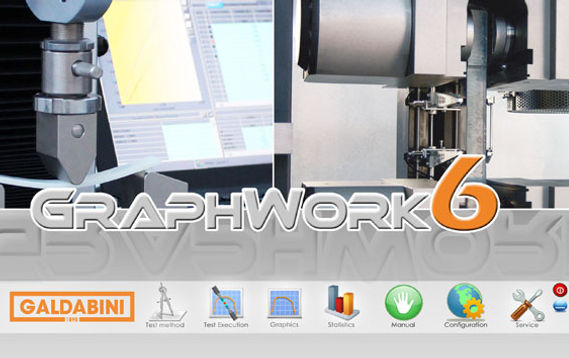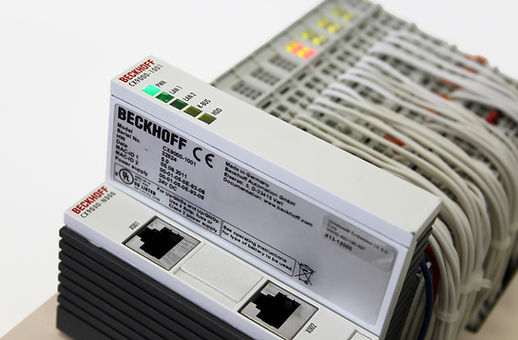11 Reasons to Choose a Galdabini Universal Testing Machine
Products > Industry Guides > 10 Reasons to choose a Galdabini

1. Galdabini est. 1890 – The 2nd Oldest Operating Manufacturer of Universal Testing Machines
3. Modular Industrial Control Electronics from Beckhoff are Readily Available and Easy to Replace
4. The Gear-Based Drive System Allows for Precise Motion Control
6. Dual Column Frame Design Engineered for Maximum Stiffness using FEA Technology
7. Support from Two Companies Solves Problems Quicker and more Effectively.
8. Universal Adapters open the Galdabini Machine up to the entire Universal Grip product line
9. Adjustable Limit Switch helps to Avoid Load Cell Crashes.
10. Galdabini Machines are Purchased in Euro’s at Wholesale Rates, Resulting in Great Value.
11. Difficult Sample Specimens can be sent to the Galdabini Tech Center for Proof-Testing.
Introduction
The market for Universal Testing Machines is one of the oldest and largest categories within the global industrial tool industry. These machines are central in the day to day operation of any quality control or R&D program within a materials manufacturing company. Whether its testing adhesive tape or industrial grade steel, tensile testing machines are used to measure the physical properties of any material.
Universal Grip estimates that the market for material testing systems in 2016 is running at about $610 million globally. There are many players within this space including Instron, MTS, Tinius Olsen, ADMET, Shimadzu, Zwick, and United. Each OEM has particular strengths and weaknesses based on their technology offering, however one manufacturer that has a particularly interesting value proposition is Galdabini of Italy, est. 1890.
This article will detail the advantages of Galdabini’s line of Universal Testing Machines as it relates to calibration, construction, design, software, and most importantly – value. Find out why manufacturers are switching to a Galdabini and loving their machine ownership experience.
1. Galdabini est. 1890 – The 2nd Oldest Operating Manufacturer of Universal Testing Machines
There is an old adage regarding long-running industrial companies who manufacture high quality products for decades or even centuries. It reads as this, “We are not the best because we are the oldest; we are the oldest because we are the best.” This is true for iconic industry stalwarts such as GE and Siemens and it is also true for Galdabini Precision Systems.
Cesare Galdabini SpA was founded in 1890 to support the burgeoning textile industry near Milan, Italy. Textiles was the first industry to embrace the industrial revolution and begin employing the use of externally powered machines to increase production outputs. The machine building know-how and ingenuity within Galdabini eventually lead to the development of specialized product lines for different end-user markets. One of the product lines developed was the universal testing machine. Galdabini also is a market leader within the Hydraulic Press market for making pots and pans as well the #1 manufacturer of Bar Straightening Machines used for straightening axles and drive trains in the Automotive Industry. The Galdabini plant is a modern, high-tech, manufacturing facility with ISO 9001 manufacturing processes and quality systems.
2. The Software Package is Complete, Flexible, and User-Friendly Allowing for a Wide Range of Tests and Procedures.
Graphwork 6 is the latest generation of Galdabini’s software for machine control and measurement. The system is incredibly easy-to-use, flexible, and under constant improvement and development. Unlike other companies who may sell software as piecemeal additions, Graphwork 6 is always sold in its complete version. The package includes over 100 pre-programmed tests including bend, compression, peel, shear, and tensile tests. Tests can be controlled using either position or load control, an option which is traditionally sold as an upgrade, but standard on the Galdabini machine and software. Given the flexibility of the machine and software, these material testing systems can be used across a variety of industries including adhesives, biomedical, composites, elastomers, foam, plastics, metal, textiles, wood, and many more.
New test methods and procedures are very easy to program using the test set-up wizard. By using the wizard, even a novice technician can program the machine to perform the appropriate steps and test phases. Technical support for test set up and execution is available from both Universal Grip and Galdabini. Support from two independent companies is just one advantage that the Galdabini brand has over other UTM manufacturers.
3. Modular Industrial Control Electronics from Beckhoff are Readily Available and Easy to Replace
One of the frustrations of many UTM owners is that the electronics and computer interfaces age at a much faster rate than the mechanical components. Replacement electronics for testing machines that are older than 10 years old can be impossible to find. Galdabini has recognized this and chosen to standardize on Beckhoff Industrial PLCs with Embedded PCs. The communication interface is handled over EtherCAT . In the event of an electronics failure, the Industrial PLC can be replaced easily with Beckhoff’s backwards compatible hardware. Many other manufacturers’ will use custom electronics and may even sell exterior interface boxes. Parts for these custom external control and data acquisition (DAQ) systems are only available through the OEM and can age quickly. Beckhoff is one of the largest providers of industrial PLCs based out of Germany.
4. The Gear-Based Drive System Allows for Precise Motion Control
The electro-mechanical universal testing machines from Galdabini are the only systems to utilize a gear based drive system. Most ball-screw based material testing systems will use an electric motor connected to a series of belts, chains and pulleys. The speed is controlled by adjusting the power going to the AC motor. The Galdabini design is unique in that it incorporates an industrial gearmotor. The AC gearmotor is sourced from the same company who manufactures the gearbox for Ducati motorcycles. Since the drive system is gear-based, the machine can achieve extremely slow movement with a high degree of resolution on the position measurement.
5. Two Redundant Absolute Encoders Continuously Measure Crosshead Displacement Making Calibration and Initialization Simple and Quick.
Most Universal Testing Machines will have one encoder connected to the bottom of one of the twisting ball screws. An encoder is a type of position sensor which can count and measure rotational movement. With some mathematical calculations, the rotational measurement can be converted into a measure of the linear movement of the crosshead.
The Galdabini design is superior in that it uses two absolute encoders, one in the gearmotor and one at the bottom of the rotating ball screw. Absolute encoders are unique because they do not lose their position when power is switched off. By constantly cross-referencing the position of the two encoders, the machine can remain calibrated for extended periods of time. The gearmotor design also has an improbable chance of slippage which is not always the case with electro-mechanical systems that are based off of a belt and pulley design. The encoders are very easy to calibrate once a year by professional calibrator using a reference extensometer.
6. Dual Column Frame Design Engineered for Maximum Stiffness using FEA Technology
Industrial grade universal testing machines require a high degree of stiffness within the frame. Galdabini machines are designed using Finite Element Analysis (FEA). FEA is a computer modeling method that can simulate and characterize material behavior while under stress. The computer program breaks up the material into small pieces and each piece is assigned specific values with regards to tensile strength, flexural strength, and other relevant characteristics. Each piece is modeled individually and a large amount of calculations are made. High end computers are needed for this type of modeling.
7. Support from Two Companies Solves Problems Quicker and more Effectively.
Despite best efforts, sometimes things do go wrong. The Galdabini machine can be accessed remotely via TeamViewer screen-sharing software to remotely diagnose any problems. Both Universal Grip and Galdabini can help with any training questions or with setting up new test methods in the Graphwork 6 software. Having two companies to go to for support can really help to get problems solved fast and efficiently.
8. Universal Adapters open the Galdabini Machine up to the Entire Universal Grip product line
Each Galdabini machine is supplied with standard sized adapter sets. From 0-20kN (4500 lbs.), a 5/8” male clevis adapter is used with a 5/16” locking pin. For 20-50kN (11K lbs.), a 1.25” male adapter is recommended with a half inch locking pin. For 100kN grips, a 40mm diameter adapter is used, and the size increases at about 100kN intervals from there.
Along with tensile grips and compression fixtures, Universal Grip also offers a full line of accessories to complete the solution. ASTM Cutting Dies and Arbor Presses are available for sample preparation. UGC can also provide aftermarket environmental chambers with its novel sled design which does not require any installation and is easily removable. Extensometers including laser, video, and long travel extensometers can easily plug into the auxilliary data channel. Galdabini machines can also ship with a pre-installed mini-PC, allowing for an out of the box, plug and play, complete solution. Other peripherals such as screens, keyboards, and printers are also available.
9. Adjustable Limit Switch helps to Avoid Load Cell Crashes.
Load cell crashes can occur when the machine is in compression mode and the cross-head makes rigid contact with the bottom of the machine. Universal Testing Machines are usually position-controlled especially when resetting after a test which is when most load cell crashes occur. By setting the limit switch on the side of the machine, load cell crashes can be mitigated by blocking the crosshead travel and default ending the test. It’s a simple, basic safety feature that not all machines have.
10. Galdabini Machines are Purchased in Euro’s at Wholesale Rates, Resulting in Great Value.
The Universal Grip Company has a unique business model within the testing machine industry. Since the company is a distributor and not a manufacturer, extra cash flow can be diverted into inventory instead of manufacturing overhead. All purchases are made in Euro’s and the market can be timed to only make a large purchase when the EUR/USD is at its lowest. Universal Grip’s first 500 lb. machine was purchased at a spot price of 1.09 EUR/USD back in March. The machine was sold several months later at a very competitive price of $16,500. Given the premium manufacturing quality of the machines, Galdabini systems purchased through Universal Grip offer Instron/MTS level quality at a local machine shop price.
11. Difficult Sample Specimens can be sent to the Galdabini Tech Center for Proof-Testing.
Certain materials such as carbon-fiber and PTFE coated textiles can be tricky to test. Samples can be sent directly to the tech center in Italy for testing and analysis. The technology center is also open for demonstrations and training for anyone who may be interested in purchasing a system.









